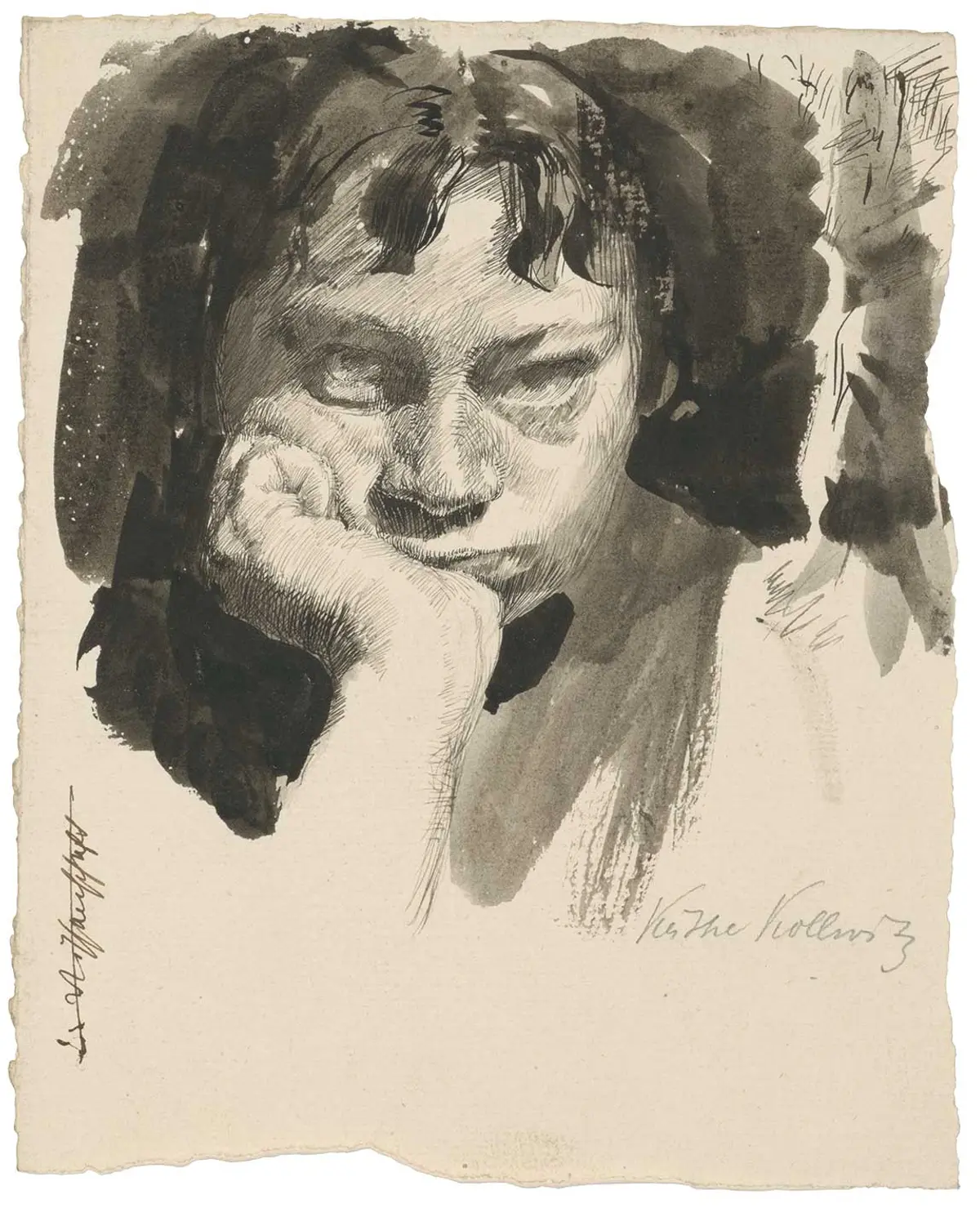Overview
In this lesson, you will explore expressing and conveying emotions through facial expressions, drawing inspiration from the work of Käthe Kollwitz.
Materials and Tools
- Drawing paper
- Ebony pencil or pencil
Activities
Close Looking
Throughout history, artists have skillfully depicted the range of human emotions in their works, using a variety of techniques to communicate feelings such as joy, sadness, and fear.
How do artists convey different emotions through facial expressions?
When you look at a person’s face, how can you tell what emotion they are expressing?
Let’s look at two artworks by Käthe Kollwitz.
Think about what emotions each one conveys to you.


- What do you notice about each artwork?
- What emotions can you identify in each?
- What do you see that shows that emotion?
- What do you notice about the size and position of the eyes, mouth, and eyebrows?
- Can you describe the pose of the body in each?
- How did the artist use line or shading to express emotion?
Käthe Kollwitz lived from 1867 – 1945 and was one of Germany’s most celebrated artists during her lifetime. Her works depict the experiences and feelings of under-acknowledged groups from this era, including from the working class and female points of view.
Through her expressive portraits, Kollwitz conveyed not only the outward appearance of the people she depicted, but also the emotions beneath the surface. In her diary from 1917, she wrote, “Don’t hide yourself – be the person you are, and find your essence.”
- What do you think the self-portrait above reveals about Käthe Kollwitz?
- What do you think she meant by, “Don’t hide yourself”? How might Kollwitz’s advice, “Don’t hide yourself – be the person you are, and find your essence,” apply to your own life or creative work?
Writing Activity
Take a moment to write a list of 5-10 emotions, moods, or states of mind.
Some examples might be pleased, happy, scared, nervous, excited, or overwhelmed.
From your list, choose 1 emotion that is important to who you are. Take a moment to write about what makes you feel that way.
Sketchbook Activity
Look at the list of emotions you wrote down and choose five to act out with facial expressions.
Look in the mirror or take photos while you act out these emotions. What does it feel like to act out each emotion?
Look closely at your face and notice which parts change shape, position, or angle when you express an emotion. Which parts stay the same?
Now touch your face with your hands. How does it feel different with each emotion? What feels the same?
Once you’ve spent some time making and observing facial expressions, draw a series of five quick sketches to show these different emotions. Make your face sketches as simple as possible, using just lines and shapes. Notice how simple line changes, such as angle, shape, size, and position can change the emotion.
Resources
Learn more about Käthe Kollwitz on the Museum of Modern Art website here:
Käthe Kollwitz retrospective

Credits
Written By:
Andrea Burgay, Director of Digital Learning
Based on a Lesson By:
Nick DeMarco, Jamie Powell, Robin Holder, and Tim Thyzel
Lesson Development:
Julie Applebaum, Senior Director
Copyright © 2024 Studio in a School NYC LLC
